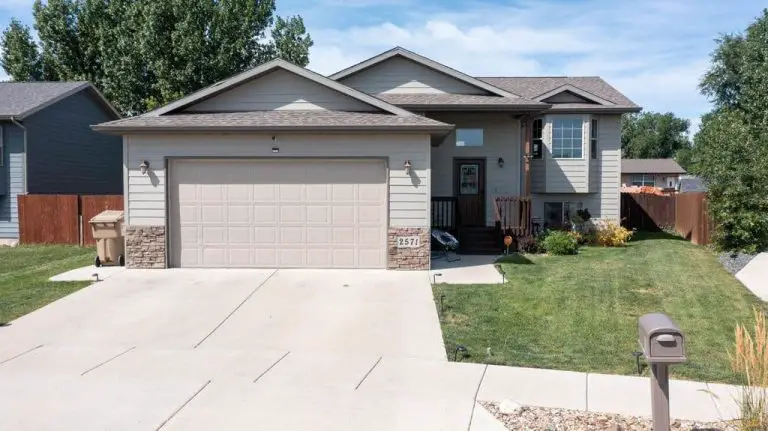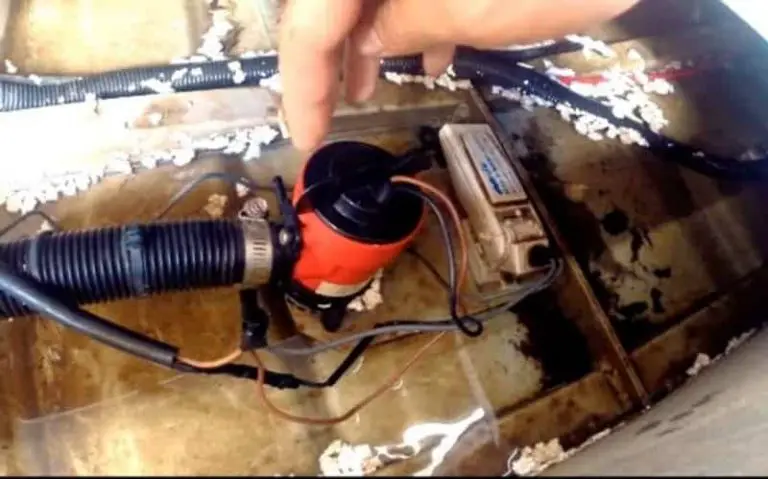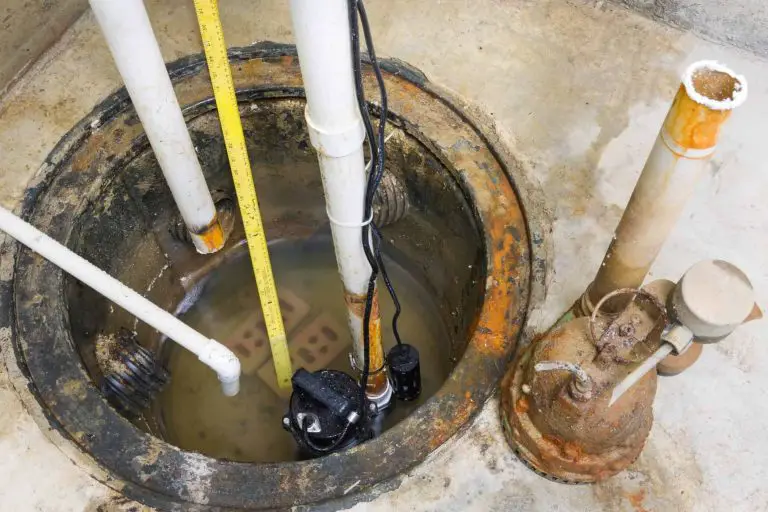Constant Water Flow into Sump Pit
Do you hear the sound of water running constantly in your basement? Is there always a pool of water in your sump pump pit? If so, you might be facing a constant water flow into your sump pit. This can lead to bigger problems and even cause water damage to your home.
In this article, we’ll discuss the most common causes of continuous water flow into the sump pit, and provide some effective solutions to prevent it from happening.
Causes and Fixes For the Constant Water Flow into Sump Pit
If you have a sump pump in your home, you may have experienced the frustration of continuous flow of water into the sump pit. Having a sump pump running constantly and unable to handle the water flow can be quite annoying. There are several reasons why this may happen, and it’s important to identify and resolve the issue to prevent flooding. Here are some of the most common causes of continuous water flow into the sump pit:
High Water Table
A high water table is a term used to describe the level at which the groundwater reaches the surface of the soil. It’s common to see it in areas with poor drainage or near an underground stream, river or lake. Heavy rainfall, flooding, or snowmelt, as well as homes located too close to a water source, can also lead to this problem.
To fix the constant water flow into the sump pit, homeowners need to consider a few options. Cheaper sump pump models may not be able to handle the high water level . For this reason, installing an extra sump pump along with the main pump would be the most effective solution. If you don’t have a budget issue, it is advisable to invest in a highly efficient sump pump which will be able deal with the heavy rain water with ease. A battery backup sump pump system will be even a better choice in the event of power outage and will work as a first line defense for basement flood.
If you have any spare sump pump sitting unused, you can also use it instead of buying a new one. Repositioning the sump pit away from the water table is another cheaper option, but it may not be practical in all cases.
Blocked Discharge Lines
Blocked discharge lines is another reason of constant flow of water pit. The discharge line is responsible for carrying all the water that the sump pump collects away from the foundation of your house.
If the sump pump runs constantly due to the partially blocked discharge lines for an extended period of time, which can lead to a number of other problems, such as a burned out motor or even in basement flooding.
Some of the things that can cause clogged discharge line include dirt, pebbles, tennis balls, clogged with debris, a clogged impeller or filter or even structural damage to the sump pit. In some cases, the water in the discharge pipe can freeze in the winter, which stops the flow of water in the sump pit mechanism.
The good news is that there are a few common ways to fix the blocked discharge lines. One way is to use hot water to try to melt any frozen water in the discharge line. Another option is to try using baking soda and chemicals to break down any sediment that might be clogging up the discharge line.
In some cases, you may need to use tools to physically remove the blockage from the discharge line. If the blockage is severe or the discharge line is damaged, it may be necessary to have a professional come and have to replace the blocked discharge lines completely.
Faulty Motor
If you’re encountering a constant water flowing into your sump pit, it’s time to take a closer look at the sump pit mechanism. There are a number of possible problems that could be causing the issue, and one of the most common reasons is a faulty motor.
Your sump pump is responsible for keeping all the excess water out of your basement, and if it’s not functioning properly, it can mean rain water pouring into your basement and damaging the very foundation of your house.
There are several reasons that can cause this situation, including the sump pump being outdated, having excessive wear and tear from overuse, or experiencing a high temperature due to overworking.
If you suspect that your sump pump motor is faulty, the first thing is to check whether it can be repaired. This can be done by a professional who will inspect the sump pump, replace the faulty motor if possible.
But the best thing to do is replacing it with a new sump pump. By installing a new sump pump, the water in the pit will be consistently and smoothly collected and drained without any disruption in the continuous flow. This will guarantee that the water is flowing properly and without any issue. This will also protect your basement floor from standing water and the potential damage that can occur from excess moisture.
Broken or Jammed Float Switch
A faulty float sensor might be another cause of constant water flow into the sump pit. The float sensor operates the sump pump by turning it on and off when the water level in the pit reaches a certain point. If the float switch gets stuck in the “on” or “off” position, that means the sump pump is not working properly, leading to water flowing into the pit even when the sump pump is running. If you notice that the switch is stuck, try manually flipping it. If it is still not working properly, please try replacing it with the correct float switch for your specific sump pump model.
Another potential cause of a jammed float switch is if the float sensor becomes tangled or obstructed. If the float sensor is supposed to be moving smoothly but is instead getting stuck, it could be due to a faulty, overworked, or overheated switch.
If that is the case, replacing the whole system might be the best idea. It is even better if you can consider installing a battery backup sump pump system to ensure that the sump pump is functioning properly even during power interruptions.
Faulty or Missing Check Valve
A check valve is a crucial component of your sump pump system. This mechanism is installed in your drainage system and ensures that water flows in only one direction and doesn’t flow back into the pit. Over time, when check valves wear out or fail, they can cause water to flow back down the pit. This can trigger the sump pump to run continuously, even when there isn’t much water in the pit. If you hear a continuous hum from your sump pump, it’s a sign that the check valve might be faulty.
Fixing a faulty check valve is a relatively easy repair job. You can easily replace the faulty valve with a new one. The process is straightforward and involves removing the old check valve and installing a new one. You can find replacement check valves at any hardware store, and they come in different sizes to fit different pipes. If you’re not handy with plumbing, it’s a good idea to hire a professional plumber to do the job for you.
Burst Pipes
When winter comes around, homeowners often face the unpleasant reality of frozen pipes. As water gets trapped in the pipes and freezes, it causes the surrounding pipes to expand and burst, leading to a constant flow of water into the sump pit.
Burst pipes can also occur due to a broken sprinkler system in your yard or a broken sewer pipe. If you start to notice the onset of dampness or liquid within a wall where it wasn’t previously, it’s a sign that you may have burst pipes.
To fix burst pipes, you’ll need to address the damage done to the pipes. This could mean replacing the pipe altogether or repairing the damage done to it. If you’re not confident in your ability to repair the pipes yourself, it’s always a good idea to contact a reliable plumber for advice and solutions.
Negative Drainage
Negative drainage is when the slope around your home is tilted towards your home, instead of away from it. This means that any water you are trying to get rid of ends up coming right back at you, leading to a never-ending cycle of water going in circles. This can put a lot of strain on your sump pump, leading to it running non-stop.
The good news is that negative drainage is a problem that can be prevented before it even starts. It’s important to ensure that the slope around your home leads away from it, so that water is properly drained. You can also implement certain landscaping practices to help resolve this issue. If that’s not possible, there are other draining and dispersal elements that you can install.
Common Questions and Concerns
Is it Possible to Stop the Constant Flow of Water into the Sump Pit?
Yes, it is possible to stop the constant flow of water into the sump pit. The first step is to identify the source of the water. The surface water could be coming from a leaky drain pipe or a clogged gutter. If there is a water leak and the source of the plumbiing leak is determined to be a faulty drain pipe, then it is imperative that the necessary actions are taken to either repair or replace the pipe in order to prevent further leakage of water. If the water is coming from a clogged gutter, the gutter needs to be cleaned.
Where Does the Water Come From in the Sump Pit?
The water in the sump pit comes from several sources. The most common source is groundwater that seeps into the pit through cracks in the foundation of the building. Other sources of water include rain water, melted snow, and water from the drains in bathrooms and kitchens.
Should a Sump Pump Always Have Water In It?
Yes, a sump pump should always have some water in it. The amount of water in the sump pit will vary depending on the amount of groundwater seeping into your basement and the efficiency of your sump pump. However, if there’s too much water in the sump pit, it could indicate a problem, such as a clogged drain or a malfunctioning sump pump.
How Much Water Should Be in My Sump Pump Pit?
The amount of water that should be in a sump pump pit depends on several factors, including the size of the pit, the ground water level that is seeping into the pit, and the pump capacity of the sump pump. A normal amount of water for a sump pump pit is between two and four inches. If there is too much water in the pit, it could indicate a bigger issue, such as a clogged drain or a malfunctioning sump pump.
Final Words
Constant water flow into the sump pit can be caused by various issues such as negative drainage, broken or jammed float switches, faulty check valves, burst pipes, and mechanical faults. To diagnose the problem, homeowners can inspect the sump pump, check valves, and discharge lines, and also consider any possible external factors such as heavy rains, high water table, and power outage. If homeowners are unable to diagnose the problem, it is always advisable to seek professional help to prevent water damage.



